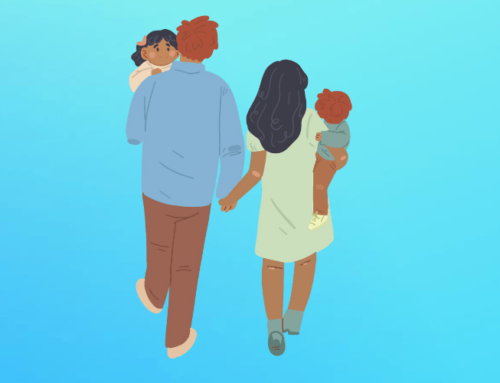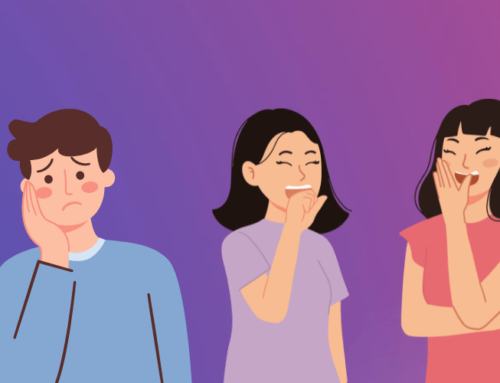Can you tell the difference between a mental health myth and fact? Learn the truth about the most common mental health myths and information to help destigmatize them. SAMHSA works to prevent and treat mental health conditions and provides support for people seeking or already in recovery.
The following information about mental health myths and facts is courtesy from our friends at SAMHSA here.
Myth: Mental health issues can’t affect me.
Fact: Mental health issues can affect anyone. In 2020, about:
- One in 5 American adults experienced a mental health condition in a given year
- One in 6 young people have experienced a major depressive episode
- One in 20 Americans have lived with a serious mental illness, such as schizophrenia, bipolar disorder, or major depression
Additionally, suicide is a leading cause of death in the United States. In fact, it was the second leading cause of death for people ages 10-24. Suicide has accounted for the loss of more than 45,979 American lives in 2020, nearly double the number of lives lost to homicide.
Myth: Children don’t experience mental health issues.
Fact: Even very young children may show early warning signs of mental health concerns. These mental health conditions are often clinically diagnosable and can be a product of the interaction of biological, psychological, and social factors.
Half of all mental health disorders show first signs before a person turns 14-years-old, and three-quarters of mental health disorders begin before age 24.
Unfortunately, only half of children and adolescents with diagnosable mental health conditions receive the treatment they need. Early mental health support can help a child before problems interfere with other developmental needs.
Find more resources to start the conversation early.
Myth: People with mental health conditions are violent.
Fact: Most people with mental health conditions are no more likely to be violent than anyone else.
Only 3%–5% of violent acts can be attributed to individuals living with a serious mental illness. In fact, people with severe mental illnesses are over 10 times more likely to be victims of a violent crime than the general population. You probably know someone with a mental health condition and don’t even realize it, because many people with mental health conditions are highly active and productive members of our communities.
Myth: People with mental health needs, even those who are managing their mental health conditions, cannot tolerate the stress of holding down a job.
Fact: People with mental health conditions can be just as productive as other employees, especially when they are able to manage their mental health condition well. Employers often do not know if someone has a mental health condition, but if the condition is known to the employer, they often report good attendance and punctuality as well as motivation, good work, and job tenure on par with, or greater than, other employees.
Myth: Mental health issues are a result of a personality weakness or character flaws, and people can “snap out of it” if they try hard enough.
Fact: Mental health conditions have nothing to do with being lazy or weak and many people need help to get better. Many factors contribute to mental health conditions, including:
- Biological factors, such as genes, physical illness, injury, or brain chemistry
- Life experiences, such as trauma or a history of abuse
- Family history of mental health conditions
People with mental health conditions can get better and many seek recovery support.
Myth: There is no hope for people with mental health issues. Once a friend or family member develops a mental health condition, they will never recover.
Fact: Studies show that people with mental health conditions get better and many are on a path to recovery. Recovery refers to the process in which people can live, work, learn, and participate fully in their communities. There are more treatments, services, and community support systems than ever before, and they work:
Myth: Therapy and self-help are a waste of time. Why bother if you can just take a pill?
Fact: Treatment for mental health conditions vary depending on the individual and could include medication, therapy, or both. Many individuals do best when they work with a support system during the healing and recovery process.
Myth: I can’t do anything for a person with a mental health issue.
Fact: Friends and loved ones can make a big difference. In 2020, only 20% of adults received any mental health treatment in the past year, which included 10% who received counseling or therapy from a professional. Friends and family can be important influences to help someone get the treatment and services they need by:
- Reaching out and letting them know you are available to help
- Helping them access mental health services
- Help them learn self-care and coping techniques
- Learning and sharing facts about mental health, especially if you hear something that isn’t true
- Treating them with respect, just as you would anyone else
- Refusing to define them by their diagnosis or using labels such as “crazy”, instead use person-first language
Myth: It is impossible to prevent a mental health condition.
Fact: Prevention of mental, emotional, and behavioral disorders focuses on addressing known risk factors, such as exposure to trauma, that can affect the chances that children, youth, and young adults will develop mental health conditions. Promoting a person’s social-emotional well-being leads to:
- Higher overall productivity
- Better educational outcomes
- Lower crime rates
- Stronger economies
- Improved quality of life
- Increased lifespan
- Improved family life









